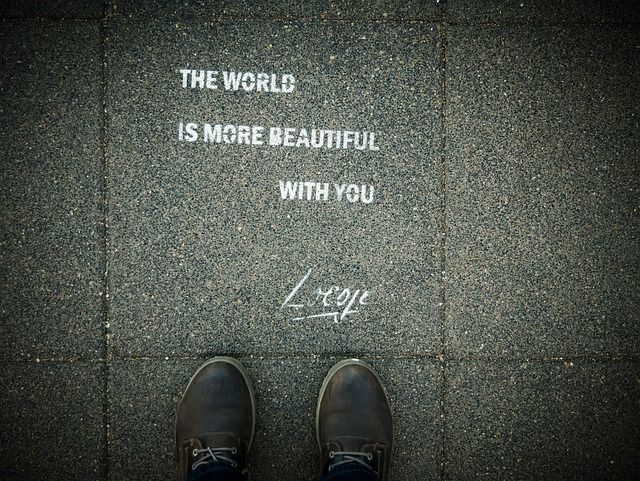Vignettes of Life: Capturing Moments Through Artistic Expression
Art has always served as a medium through which humans express their thoughts, emotions, and experiences. Throughout history, artistic expression has been used to reflect the world in an abundance of forms–from paintings and sculptures to performances and literature. The term ‘vignette’ conjures an image of a brief but vivid portrayal of a moment, thus aligning perfectly with the essence of art in capturing the beauty and complexity of life. In this article, we will explore how various art forms create a tapestry of vignettes that allow us to engage with, understand, and reflect on life’s most precious moments.
The Nature of Vignettes
A vignette encapsulates a slice of life, portraying a scene, character, or emotion that resonates deeply with the audience. Unlike a full narrative, which may require intricate exposition and backstories, a vignette aims for impact through its brevity and focus. Imagine a sunset that paints the sky in vibrant hues; the beauty of that moment is enough to evoke a multitude of feelings, yet it exists in its fleeting nature. That is the essence of a vignette.
This concept permeates various artistic disciplines, each bringing its distinct flavor to the art of representation. Through either visual or verbal means, vignettes serve as snapshots that can convey intense meanings within just a few brush strokes or words. They allow both the artist and the audience to cherish and reflect on life’s transient beauty.
Artistic Mediums That Explore Vignettes
Visual Arts
In the realm of visual arts, vignettes come alive through paintings, sculptures, and photography. Artists often use a range of techniques to isolate moments within their work, inviting viewers to reflect and interpret the scene.
Paintings: The magic of painting lies in the artist’s ability to evoke emotions through color, form, and composition. Artists like Vincent van Gogh and Claude Monet epitomize the power of impressionism in creating vignettes that speak to personal experiences, natural beauty, and human emotion. Van Gogh’s swirls in The Starry Night convey a sense of turbulence and wonder, while Monet’s water lilies focus on quiet moments of tranquility. These pieces encapsulate not just the visuals, but entire sensations and stories within a single frame.
Sculptures: Sculpture allows for tactile and spatial exploration of vignettes. A single object or figure can express multifaceted narratives and emotions. Consider the emotive power of Michelangelo’s Pietà, which captures mourning and beauty in the delicate portrayal of Mary cradling Jesus. The depth of expression in the contours of stone immortalizes a fleeting moment fraught with despair and love—hallmarks of the human experience.
Photography: The advent of photography revolutionized the concept of vignettes, making it possible to capture untouched moments in time. A single photograph can evoke powerful memories, holding within it a myriad of stories and sentiments. Iconic images, such as the photograph of the Napalm Girl taken by Nick Ut, utilize vignettes to invoke social consciousness as they provide an instant connection to emotional experiences. Through the lens, photographers turn spontaneous moments into lasting narratives, inviting viewers to see the world through a different perspective.
Literary Arts
In literature, the vignette form allows authors to delve into character studies, thematic explorations, and the human experience through lyrical prose and poetic imagery. Vignettes in literature are often characterized by brevity while retaining a vivid emotional depth.
Short Stories: Writers like Sandra Cisneros in The House on Mango Street use vignettes to tell a larger story through small, poignant moments. Each vignette unfolds aspects of the protagonist’s life, encapsulating themes of identity and belonging while creating a cumulative emotional impact.
Poetry: Poetry is inherently rich in vignettes, as it captures moments of thought and feeling in highly concentrated forms. Imaginative poets such as Mary Oliver and Rainer Maria Rilke articulate profound truths through snapshots of nature, existence, and experience. The metaphors and similes inherent in poetry allow for expansive interpretations of simple moments, capturing the essence of life’s fleeting beauty.
Performing Arts
The performing arts manifest vignettes through movement, sound, and presence, translating emotions into real-time experiences. Dance, theater, and music all create ephemeral moments that resonate with audiences, each performance presenting a unique interpretation of familiar narratives.
Theater: The stage often uses vignettes to encapsulate the emotions and experiences of characters within limited time frames. Plays like Waiting for Godot by Samuel Beckett showcase how moments of stillness and dialogue can explore the human condition, drawing audiences into their own reflections on existence.
Dance: Dance conveys stories and emotions without the use of words, relying on the body to express movement and feeling. Choreographers like Martha Graham utilize the human form to depict moments of struggle and triumph, resonating with audiences through a kinetic exploration of life.
Music: Musical compositions encapsulate vignettes through various melodies, harmonies, and rhythms. Composers like Claude Debussy employed impressionistic techniques in music to create emotional vignettes that transport listeners through sound. A single piece can evoke nostalgia, joy, or even sorrow, resonating with the listener’s own personal experiences.
The Intersection of Art and Life
Art reflects life not only by capturing moments but also by providing a lens through which we can examine our experiences. Vignettes serve as mirrors, encouraging introspection and fostering empathy. Through artistic expression, audiences fleetingly live through another’s perspective, understanding their joys and sorrows, struggles and triumphs.
For instance, art therapy utilizes the power of expression to help individuals process trauma and navigate emotional landscapes. In this setting, participants learn to express rather than suppress feelings, creating vignettes that articulate their narratives and promote healing. This therapeutic aspect of art emphasizes our universal need to communicate, connect, and be understood.
The Importance of Memory and Reflection
Vignettes serve not only as reflections of life but also as essential elements of memory. Art allows us to capture our lived experiences and transform them into enduring artifacts. Such artifacts help preserve and communicate individual and collective histories, bridging the past with the present.
Art’s capacity to evoke memories is profound, as it has the power to trigger nostalgia or a sense of longing. Just as a song may remind us of a particular time, or a painting may transport us to a cherished moment, vignettes encapsulated in art become vessels of memory. Through the re-examination of these vignettes, individuals can forge connections to their feelings, experiences, and others, creating a more profound understanding of themselves.
Summing Up the Artistic Dialogue
In conclusion, the beauty of vignettes lies in their transient yet potent nature. They capture the essence of lived moments, memories, and emotions through artistic forms, serving as touchstones that allow for reflection and connection. Whether through visual arts, literature, or the performing arts, these brief depictions encourage us to appreciate the world around us and recognize the intricacies of the human experience.
Artistic expression remains among humanity’s most meaningful endeavors, creating a dialogue that transcends time, space, and culture. As we engage with art and its vignettes, we delve deeper into our understanding of life, inviting introspection, empathy, and shared experiences. In this intricate tapestry of artistic expression, every moment holds the potential for beauty, poignancy, and connection.

